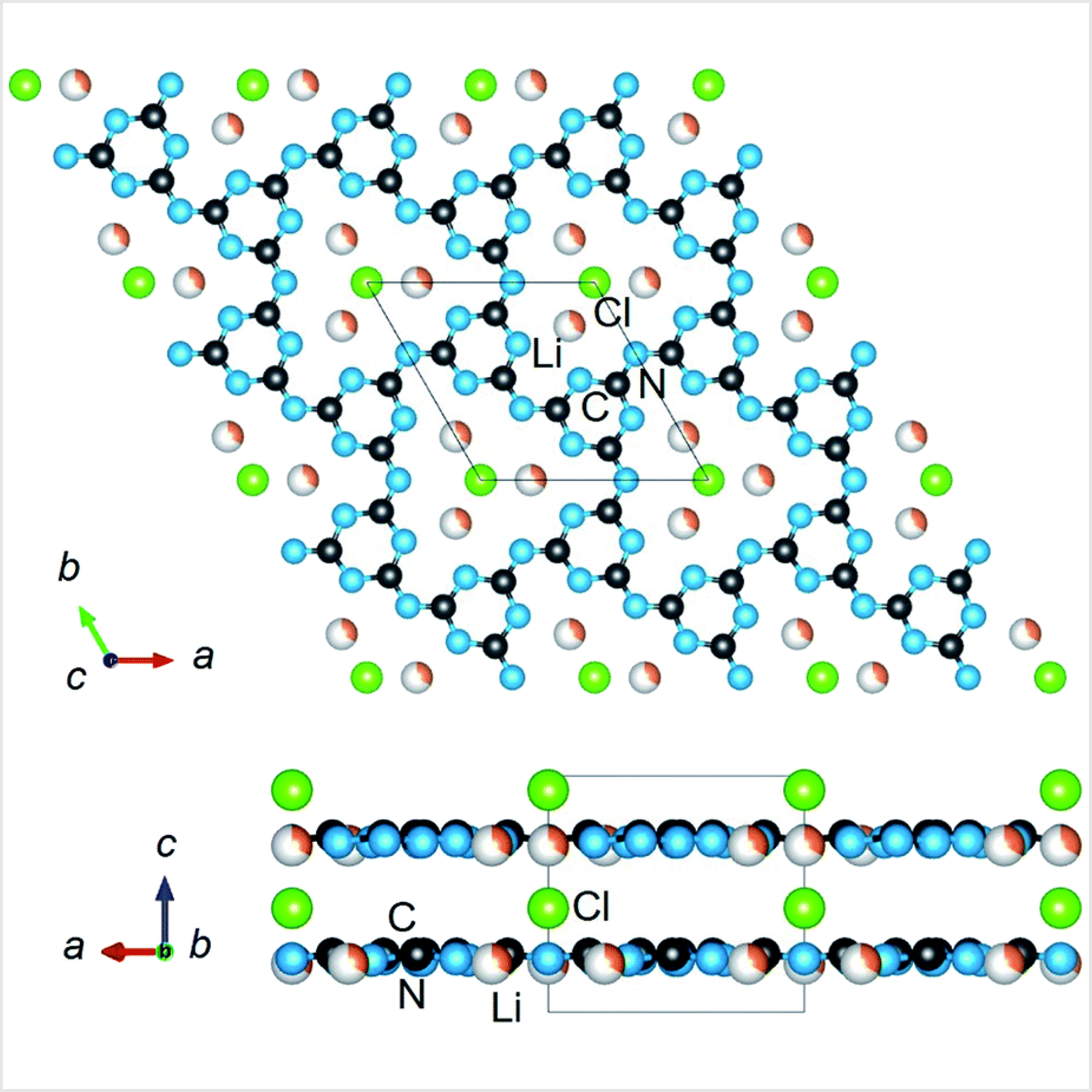The in-depth understanding of the reported photoelectrochemical properties of the layered carbon nitride, poly(triazine imide)/LiCl (PTI/LiCl), has been limited by the apparent disorder of the Li/H atoms within its framework. To understand and resolve the current structural ambiguities, an optimized one-step flux synthesis (470 °C, 36 h, LiCl/KCl flux) was used to prepare PTI/LiCl and deuterated-PTI/LiCl in high purity. Its structure was characterized by a combination of neutron/X-ray diffraction and transmission electron microscopy. The range of possible Li/H atomic configurations was enumerated for the first time and, combined with total energy calculations, reveals a more complex energetic landscape than previously considered. Experimental data were fitted against all possible structural models, exhibiting the most consistency with a new orthorhombic model (Sp. Grp. Ama2) that also has the lowest total energy. In addition, a new Cu(I)-containing PTI (PTI/CuCl) was prepared with the more strongly scattering Cu(I) cations in place of Li, and most closely matching with the partially-disorder structure in Cmc21. Thus, a complex configurational landscape of PTI is revealed to consist of a number of ordered crystalline structures that are new potential synthetic targets, such as with the use of metal-exchange reactions.
Pauly, M.;
